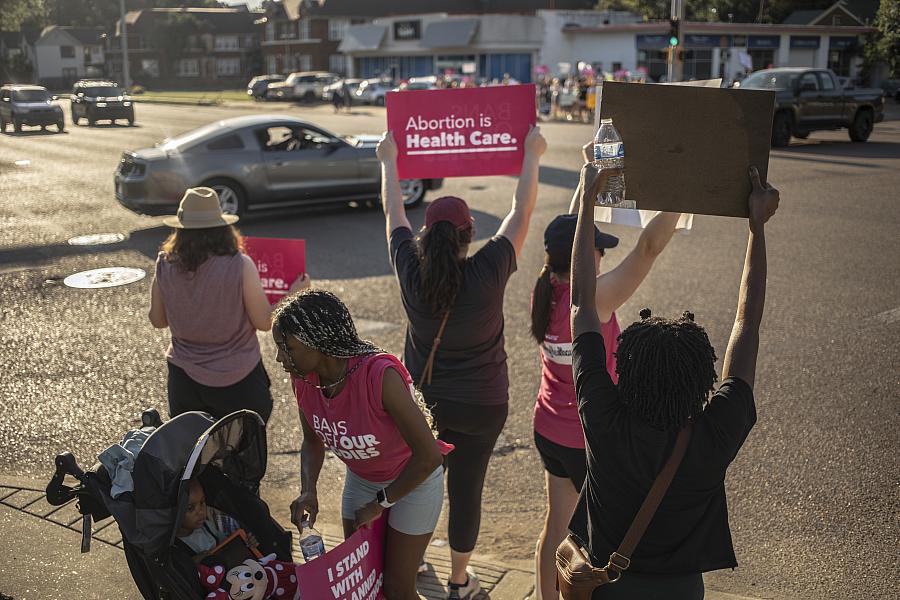The ripple effects of abortion restrictions

(Photo by Andrea Morales for NBC News)
The Supreme Court’s ruling in Dobbs v. Jackson Women’s Health Organization a year ago has reshaped reproductive health care across the U.S., with abortion access now banned, severely restricted or unavailable in nearly two dozen states. The issue is likely to be key for voters — and candidates — in the 2024 elections.
Though Dobbs and the issue of abortion overall have been widely covered by national media, the many ripple effects of the decision and subsequent policy changes continue to evolve, and impacts on women and their families are still emerging.
One such group is the growing number of women who were unable to obtain wanted abortions post-Dobbs and are now raising infants. What do their lives look like? How has being unable to obtain an abortion affected the overall well being of those individuals and their families?
Do the findings of the Turnaway Study, a 10-year research project that famously documented the impacts of being denied abortions, hold up today? That research, which began in 2008, found that women who couldn’t obtain wanted abortions were more likely to endure long-term economic hardship, abusive relationships, single parenthood and serious health issues, and that their children were more likely to live in poverty and fail to hit development milestones. Only a small handful of stories published in national outlets have documented the lives of women forced into parenthood after Dobbs.
Meanwhile, some people with wanted pregnancies are also experiencing indirect effects of abortion bans. Recent research has documented the challenges that health care providers in states with bans and restrictions face when treating pregnant patients who experience complications or emergencies that require terminating pregnancies. A survey published in June by KFF, formerly known as the Kaiser Family Foundation, found that 68% of OB-GYNs surveyed reported that the Dobbs ruling “worsened their ability to manage pregnancy-related emergencies.”
Even standard maternity care may be harder to access for some pregnant women, given the predicted exodus of medical residents and professionals from states with abortion restrictions, as well as the growth of so-called maternity care deserts — counties lacking maternity care resources. More than 2 million women of reproductive age live in such counties, according to a report published last fall by the nonprofit organization March of Dimes. Research has shown that pregnant people and infants in states with the strongest abortion restrictions tend to have worse health outcomes and less access to health care, and that Black and Brown women, low-income women and those in rural areas are disproportionately affected. What is it like to seek health care for a wanted pregnancy, only to encounter obstacles resulting from state abortion policies?
For millions of American women of childbearing age, abortion access is highly dependent on where they live and whether they have the means to travel. Over the next year and beyond, as presidential candidates and pundits discuss the politics of abortion access from campaign trails and TV studios, it’s important to continue highlighting the implications of abortion access as a matter of health care, rather than just a political football. Telling the side-by-side stories of those who wanted abortions and those who want to be pregnant is one way to show the high stakes of this issue, both for the first wave of post-Dobbs parents and generations to come.
Reporting in-depth personal stories related to abortion and maternity care isn’t easy: It requires time and money to find sources, earn their trust and put their individual experiences into broader context. Many newsrooms lack the resources to support this kind of work, but with the support of USC’s Center for Health Journalism 2023 National Fellowship, that’s the reporting I hope to do.
Stay tuned for the resulting stories later this year, which will be published at NBCNews.com. In the meantime, feel free to reach out with any ideas, tips or resources you think could be useful in this reporting. You can find me on Twitter @juliannemcshane or by email at julianne.mcshane@nbcuni.com.

